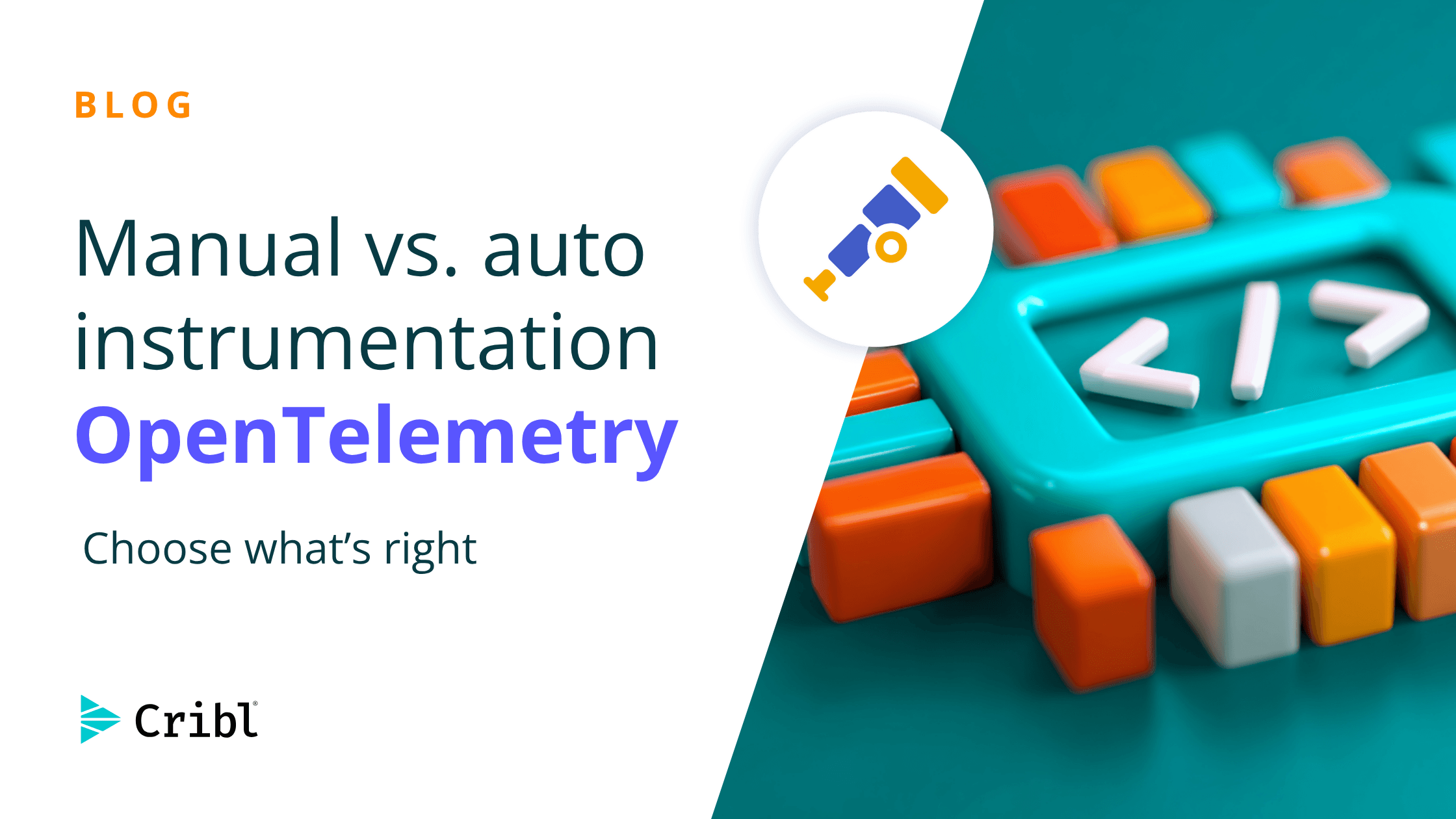While spring is traditionally the time for tidying up for most folks, IT and Security teams know it is important always to maintain a clean, streamlined environment. However, we understand that doesn’t always happen with growing data volumes, stagnant budgets, and changing organizational priorities. This blog is to help you understand if you are properly overdue for a clean-up. We know there are so many important components to having a tidy and efficient data ecosystem, so today we will just focus on agents!
Tool sprawl, siloed decision-making, and rigid vendor-specific solutions have resulted in environments filled with many legacy agents. You will often find many agents on the same hosts, each owned by different teams, yet often collecting the same data. On top of all this, I am sure you have found these forwarders and aggregators to typically be outdated and very frustrating to use, especially at scale.
Signs It’s Time to Clean
This current agent dilemma is causing issues for IT and Security teams everywhere, and they are reaching a point where they need to start thinking about shifting their agent management strategy and consolidating their agents, and your team might just be one of them!! What do you look for? How do you know if your organization is overdue for some spring (or anytime) cleaning?
Duplicative Data Collection at the Edge
How many of your agents are collecting and processing your system and security logs? Your answer is probably more than one (when it shouldn’t be)… and more realistically over three at minimum. For example, we commonly see folks managing both Splunk Universal Forwarder and the Exabeam agent yet both tools are collecting a lot of the same information (such as logs). Alternatively, separate agents do very similar data collection and forwarding to the same destinations but are specifically deployed for Linux, Windows (UF, Beats), and K8S (Fluentbit, Logstash).
Operational Inefficiency from Agent Overload
Do you find yourself frequently waiting for another team to be able to make the changes you want to your agent –such as your IT team who owns access to the servers they are on?
Or if you don’t need to wait on another team, do you have to manage multiple different types of vendor-specific agents, each requiring a subject matter expert with an advanced skill set to make changes and upgrades? Or even worse, do multiple teams have multiple agents on the same host creating unneeded complexity, exasperating collaboration efforts, and inefficient resource consumption?
Time-Exhaustive Agent Management
Do your current agents lack a rich UI and require stabbing around at handwritten, custom configurations for each agent? Are upgrades painful and time-consuming? Do you need to turn off or put your agent in maintenance mode, make changes to all clients, restart the server/application, and then hope everything works, or do you otherwise troubleshoot manually? Are you unable to make the same change to multiple at once?
If you answered yes to some or most of these questions, it is time to clean up and level up with Cribl Edge! Cribl Edge is a modern, highly scalable, and vendor-neutral agent that allows you to consolidate redundant forwarders and aggregators to reduce complexity and cost, minimize attack surfaces, and give control back to your team.
You might be thinking, “Ugh, another agent”? Isn’t this just adding to my agent overload? That’s what’s so awesome about the vendor-neutral Cribl Edge; you can collect, clean, and enrich data just once at the edge and then send it to one or all the destination(s) of your choice. Combined with automatic discovery of host system data, metrics production, and an interactive UI, Cribl Edge is designed to support today’s modern distributed microservice architectures and is highly scalable with the ability to centrally deploy, configure, and manage thousands of agents (50,000 as of Cribl software release 4.6 to be exact). You can easily expand data collection and reduce resource overhead, all while avoiding vendor lock-in with agnostic integrations.
TL;DR: Cribl Edge will help you consolidate your current agents and prevent further agent proliferation (while giving you an upgrade with smart and modern tech).
The Benefits of Agent Consolidation with Cribl Edge
Once you experience the magic of tidying up, your life will be CHANGED (shout out to Marie Kondo)… maybe not your entire life, but you will likely be a little less stressed at work. After you consolidate your agents and clean up your data collection at the edge, you will spend less time dealing with the challenges outlined above, so you won’t have to worry about all that data wrangling at the edge and will have more time to focus on the fun parts! You can make your endpoint data work for you and simultaneously decrease complexity and cost, minimize attack surfaces, and give control back to your team.
You can do more efficient data collection at the edge when you no longer have to manage multiple agents gathering the same data. Eliminating duplicative data collection lowers vendor costs and reduces your local resource consumption of CPUs, memory, and disk space. With Cribl Edge, you can collect your data once, easily clean and shape it, and seamlessly send it everywhere it needs to go. Plus, if you ever need it again later, you can instantly replay that data.
For example, you can replace both your Splunk Universal Forwarder and Exabeam agent with Cribl Edge, collect the data once instead of twice, do some light data cleaning by taking advantage of any unused capacity on endpoints (or send to Stream for heavier work), and then send the prime-time ready data to Exabeam AND Splunk AND long-term storage. You can get the data you need to all three places but just collect data once and do so very easily with only one agent, and then if you ever need it in the future for deeper investigations or audits, you can replay it in a few clicks. Alternatively, you could search data at the edge in its place by using Cribl Edge with Cribl Search. You can execute searches directly on your endpoints, meaning you can explore and interrogate edge data without any data migration needed and then only send the necessary data you find to systems of analysis.
Why deal with the complexity of managing multiple agents when you can simplify your operations with Cribl Edge? With less –or one– agent(s), you won’t have to deal with all those frustrating configuration errors and increased latency as you figure out which agent on the host is the culprit. Cribl’s modern agent lets you enjoy a rich user interface, version control, and real-time change validation for easy configurations and quick upgrades so you will no longer dread doing updates. With built-in fleet management, you can even centrally change thousands of nodes at once. So when following Mari Kondo’s method and you ask yourself, “Does my agent spark joy?” you will be able to answer yes.
Consolidating agents with Cribl Edge not only reduces infrastructure costs and management overhead but, even more importantly, gives control back to your team so you don’t have to wait on a different team to make changes and say goodbye to unnecessary delays and frustrations. Break down those silos and take back the reins with Cribl Edge for unified, flexible agent management. With our vendor-neutral approach, you have the power with one agent to rule them all – or just some, you choose!
For example, we saw Levi’s had a myriad of agents and collectors, including Beats, FluentD, Logstash, Exabeam, and many Windows servers legacy logging agents that were especially difficult to maintain with no central management. With Cribl Edge, they were able to remove duplicate data collection across these tools, consolidate their infrastructure with centralized agent management, and then send to Cribl Stream to clean and shape their data before routing to Exabeam. They gained the power of choice and flexibility to more easily collect and deliver data to the right places in the right formats reducing complexity, decreasing management overhead, spending less on vendors, and overall streamlining their data management strategy.
Want to be Edg(e)y?
Soooo what do you think? Are you realizing that you might be overdue for some cleaning but don’t want to commit to anything just yet? You can have a guided example of Cribl Edge with our sandbox or download a free trial to check things out before you take the plunge!






